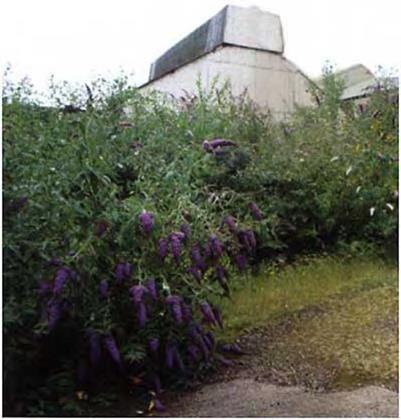Anna Jorgensen
What would the world be, once bereft Of wet and of wildness? Let them be left,
O let them be left, wildness and wet;
Long live the weeds and the wilderness yet.
(Manley Hopkins, 1948)
Introduction
At the beginning of the twenty-first century many urban-dwellers’ experience of naturalistic or wildlooking vegetation in towns and cities is restricted to specific settings: remnants of ancient woodland on land deemed unsuitable for development, natural succession taking over on derelict or brownfield sites, abandoned allotments, vegetation beside rivers or other water bodies and urban nature-reserves.
 |
11.1
Wild-looking vegetation in an urban setting
|
|
11.2
Parkland in the style of the English Landscape movement
|
|
11.3
A mix of sown meadow and shrubs provides a visually and ecologically complex landscape that requires a fraction of the input and maintenance of conventional urban landscape
These settings usually have one thing in common: they are often associated with abandonment and decay (Figure 11.1). In most maintained public open spaces the predominant landscape is parkland in the style of the English Landscape movement, combined with floral displays inspired by the Victorian gardenesque, a style as far removed from ecological planting design as it is possible to be (Figure 11.2). Given these polarities, it is not surprising that people may find the idea of deliberate ecological plantings in public spaces difficult to appreciate (Figure 11.3).
Whilst much of this book is about the technical, aesthetic and design issues related to ecologicallyinformed planting, it is equally important to consider the social and cultural context. Although designers and managers may believe in the inherent benefits of a naturalistic approach, and may appreciate its aesthetic qualities, if it is not accepted by those that have to live, work and play in such a setting, then these plantings can never be truly sustainable. This is perhaps particularly true of ‘nearby nature’—the areas and patches of public green close to people’s homes which, to some extent, urban dwellers have no choice as to whether they use or not. Helford (2000) has noted (in the context of urban habitat restoration):
Making nature is inevitably the making of social relationships. And this is why landmanagers, volunteer restorationists, and ecologists, to name a few, might want to listen to what social scientists have to say about nature, conservation practice, and in particular, public conflict over these natures and practices.
There are perhaps two great conundrums that must be addressed in any discussion of public acceptance of ecological landscapes in towns and cities. Firstly, for some time, mainstream landscape preference research has found that most humans prefer landscapes that resemble the previously referred to English Landscape style parkland (wide open spaces with trees scattered singly and in clumps). This landscape was adopted wholesale by the designers and planners of many towns and cities in the twentieth century: in particular, by the designers of post-war, high-rise, high-density housing in open parkland, based upon the ‘Radiant City’ of Le Corbusier (1923). Yet, this type of landscape has been criticised by many commentators for its uniformity, lack of human scale and inadequacy as a setting for a variety of human activity (Newman 1972; Coleman 1985; Jacobs 1994). Do people really prefer this bland landscape, or could it be that this mainstream research has limitations, or have designers missed the full potential and richness of a naturalistic ‘urban savannah’ style? Secondly, does the widely held view that structurally more complex, ecological, nature-like landscapes in urban areas are unsafe, mean that any attempt to introduce naturalistic vegetation on a wider scale is doomed to failure, or could it be that much of this negativity is founded on little evidence and, again, a failure by designers to create appropriate contexts and types of naturalistic vegetation in different settings?
In an attempt to answer some of these questions, this chapter reviews research findings relevant to the issue of public perception of urban ecological plantings, by considering, firstly, the theoretical basis of landscape preference and perception, and, secondly, public perception of specific ecological vegetation types in designed settings. It is helpful to have a definition of the broad concept of ‘ecological plantings’ at the outset. In this book, ‘ecological plantings’ describes plantings that are structured around natural processes, or natural plant communities, or both, and which may also have a naturalistic appearance. It does not entail the exclusive use of native species, though many plantings that fall within the definition are very natural to look at and may consist mainly or entirely of plants of native origin.





